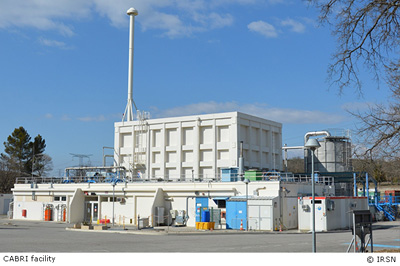 The aim of IRSN’s CABRI International Program (CIP) is to use experiments to improve our knowledge of the behavior of fuel rods in pressurized water reactors (PWRs) during a power transient accident. The results of the first CIPQ test, which was performed on April 16, 2018 at the renovated CABRI facility equipped with a pressurized water loop, have been analyzed and the corresponding report is ready to be sent to the program partners.
The aim of IRSN’s CABRI International Program (CIP) is to use experiments to improve our knowledge of the behavior of fuel rods in pressurized water reactors (PWRs) during a power transient accident. The results of the first CIPQ test, which was performed on April 16, 2018 at the renovated CABRI facility equipped with a pressurized water loop, have been analyzed and the corresponding report is ready to be sent to the program partners.
The CIPQ test successfully qualified the renovated CEA-owned CABRI facility and its instrumentation. The test used a 560-mm test rod consisting of 48 MOX fuel pellets with Zircaloy 4 cladding, previously irradiated during three cycles in a 900 MWe PWR.
Analysis of all the experimental data acquired in real time and in the post-test phase shows very satisfactory consistency between the different measurements, and reveals two areas of rod failure with fuel dispersion in the coolant. The failures were observed at the top (along a length of around 110 mm) and at the bottom (along a length of around 80 mm) of the fissile column at diametrically opposite angles (180o/200o and 0o respectively).These results will be supplemented by non-destructive and destructive examination of the rod to better understand the thermomechanical phenomena at work during the test and to analyze the cladding failure scenario in more detail.
The experimental measurement analysis report will soon be sent to the 15 international partners in the CIP program, who are from 12 countries. In parallel, teams from IRSN and the CEA are already starting to prepare for the next two CIP tests, which will be performed in 2020.
To learn more:
https://www.irsn.fr/cabri-en
Contact
François Barré, IRSN
francois.barre@irsn.fr
Источник: eurosafe-forum 6.2019
